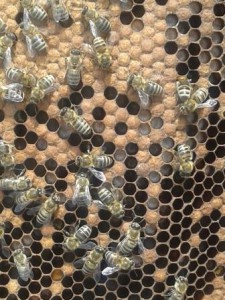
Pollination is also a vital part of creating and maintaining diversity in the environment – worth remembering as we celebrate World Biodiversity Day. Biodiversity isn’t just about the glamorous species – tigers and snow leopards and saiga antelopes – but about everything that makes up the extraordinary complex networks of nature, in which ultimately everything is dependent on everything else.
The life of a bee, and the importance of bees in the global ecosystem, have inspired the British pavilion at the 2015 Milan Expo (http://bit.ly/1b8qrhj; http://www.ukpavilion2015.com). The UK Pavilion was designed by the British artist Wolfgang Buttress, and developed by British companies including Stage One, Rise and BDP. The Pavilion explains the crucial role of pollination in the food chain and the global challenge of sustaining honeybee populations. Visitors can follow the path of a honeybee through an orchard and wildflower meadow into the hive, the Pavilion’s centrepiece, a 17m high filigree aluminium sphere representing a beehive. The hive is filled with the sound of bees and wrapped in LEDs flickering in response to the movement of bees in a real hive, located in the UK. It illustrates the core theme of the Expo, “Feeding the Planet, Energy for Life”, aimed at highlighting one of the most pressing challenges of our time – how to feed and sustain an expected rise in the world’s population to 9 billion by 2050.
The meadows beyond Parkent are also full of birdsong, and I got up frequently from our shashlik lunch to look for the source of some new voice I didn’t recognise. They are a lovely example of biodiversity in practice. Long may they stay that way.
